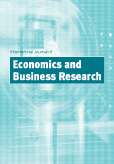
International Trade Patterns and Labour Markets – An Empirical Analysis for EU Member States
During the last decades, international trade flows of the industrialized countries became more and more intra-industry. At the same time, employment perspectives particularly of the low-skilled by tendency deteriorated in these countries. This phenomenon is often traced back to the fact that intra-industry trade (IIT), which should theoretically involve low labour market adjustment, became increasingly vertical in nature. Against this background, the present paper investigates the relationship between international trade patterns and selected labour market indicators in European countries. As the results show, neither inter- nor vertical intra-industry trade (VIIT) do have a verifiable effect on wage spread in EU member states. As far as structural unemployment is concerned, the latter increases only with the degree of countries’ specialization on capital intensively manufactured products in inter-industry trade relations. Only for unemployment of the less-skilled, a slightly significant impact of superior VIIT seems to exist.




